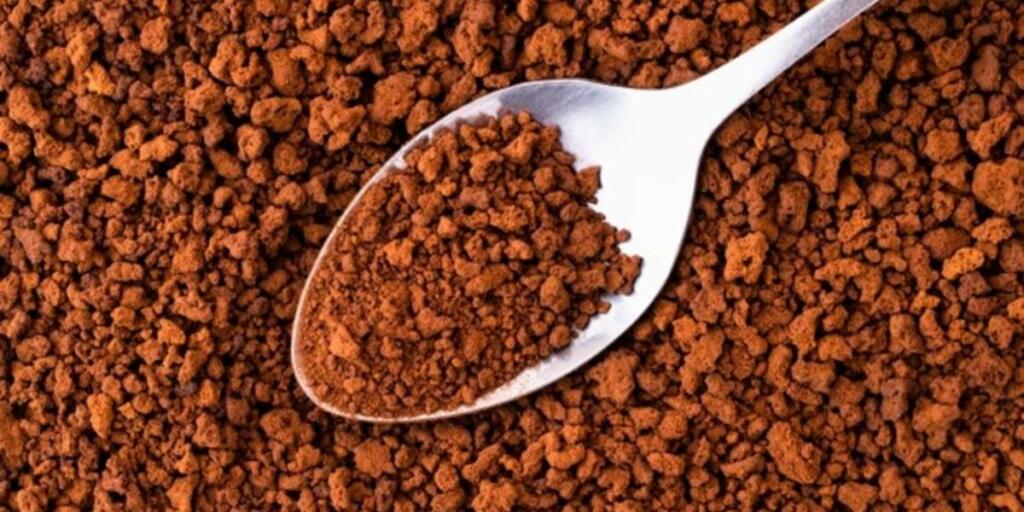There’s no denying the appeal of instant coffee, especially given its convenience and role in trendy beverages like Dalgola coffee. While I, personally, opt for instant coffee only in dire situations (such as forgetting my beloved French press travel mug from ESPRO during my travels), I understand its popularity and have been intrigued by its unique production process.
Contrary to popular belief, instant coffee isn’t a second-rate alternative; rather, it’s simply a different extraction method applied to the same beans we know and love. The only difference lies in the removal of water post-brewing, leaving behind a dry powder. In this article, we delve into the science behind instant coffee production, discussing its two main methods and history.

Methods of Instant Coffee Production
Instant coffee can be produced through two main methods:
- Spray Drying: This involves spraying liquid coffee through hot and dry air. By the time the coffee droplets hit the ground, they’ve dried into powder.
- Freeze Drying: This complex process starts with frozen coffee. The liquid then undergoes sublimation, which involves forcing the vaporization of ice without passing through the liquid stage, resulting in powder.
Freeze-drying is generally considered superior, as it retains more aroma. However, if the flavor seems insufficient, additional aroma and flavor are added into the coffee powder. Now, let’s dig deeper into these processes.
Understanding Spray-Drying and Freeze-Drying

Spray-drying is the less common but cheaper method. Here, liquid coffee is released by a pulse combustion spray, blown through hot air, and atomized by high-velocity air to form powder. Despite its economic benefits, spray-drying tends to produce instant coffee with less aroma than freeze-drying.
On the other hand, freeze-drying is a more costly but favored method due to its ability to produce instant coffee with more aroma. This process involves roasting, grinding, and brewing coffee beans, followed by evaporation and sublimation to create a coffee extract. This extract is then chilled, frozen, and subjected to a powerful vacuum to remove water. The resulting granules are sprayed with captured aromas before packaging.
The Origin of Instant Coffee

Although coffee had been a part of European culture for around 200 years, the first versions of instant coffee didn’t make their appearance until 1771. It wasn’t until the mid-1800s that companies like Folgers began offering ground beans in cans for consumers to roast and grind at home.
The first coffee powder hit the market in 1906, courtesy of Cyrus Blanke. By 1910, George Washington (an immigrant, not the former president) introduced refined coffee crystals. Nestle launched Nescafe in 1938, which was produced by spraying liquid into heated towers, and by 2012, Nescafe accounted for 74% of the instant coffee market.

Health Implications of Instant Coffee
One of the common concerns surrounding instant coffee is its health impact. However, instant coffee offers several benefits. For instance, it contains antioxidants and nutrients. In fact, one study even suggests that instant coffee may have more antioxidants than other brewing types.
Moreover, instant coffee tends to contain less caffeine than regular coffee, making it a suitable option for those trying to reduce caffeine intake. However, it’s important to note that it contains acrylamide, a harmful chemical produced during the roasting process. Still, research indicates that the amount present in coffee is too low to cause harm.
To enhance the flavor and aroma of your instant coffee, consider dissolving the granules in a small amount of cold water before adding hot water. This simple trick can make a noticeable difference.
Wrapping Up
While nothing can replace the experience of freshly brewed coffee, instant coffee is a fascinating topic that’s worth exploring. It’s convenient, versatile, and harbors a rich history. We hope this article has provided you with insight into its production process and origins.
Remember, enjoying instant coffee is not about settling for less but about embracing a different coffee experience. So, next time you find yourself reaching for a cup of instant coffee, do so with a newfound appreciation for the science and history behind it. Cheers to your next cup!

Editorial Staff
The editorial staff at Crazy Coffee Crave is a team of coffee enthusiasts & Baristas who enjoy the one thing we all think about as soon as we get up in the morning. Trusted by thousands of readers worldwide.





